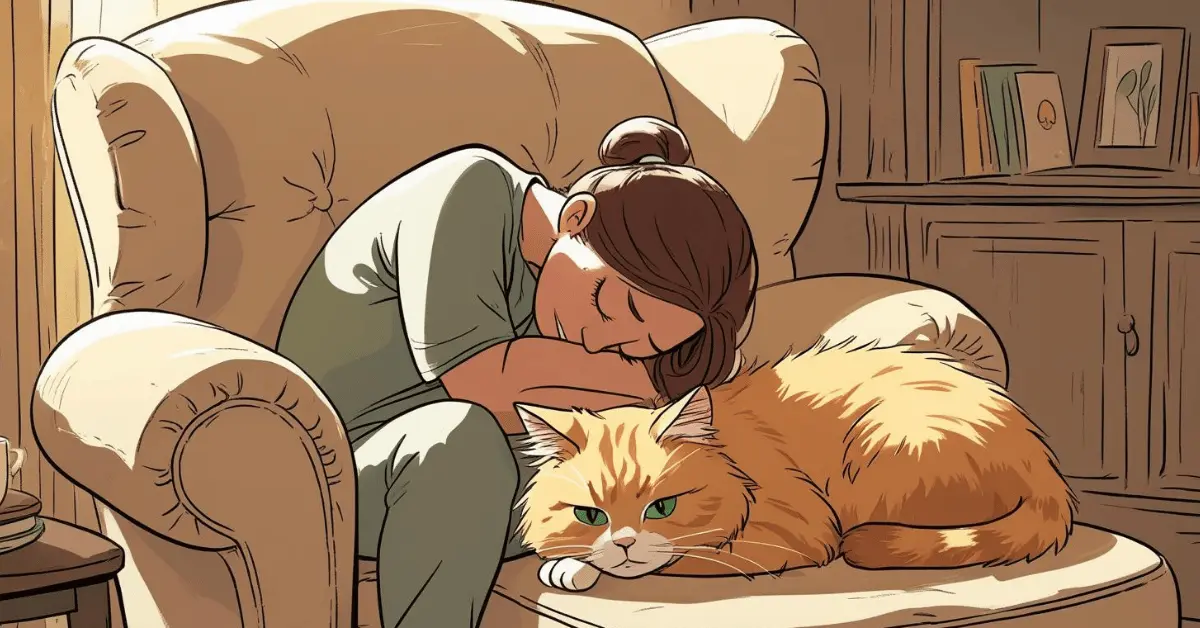Many pet owners have noticed their cats behaving differently when they are going through emotional struggles. While science is still exploring the depths of animal empathy, there is growing evidence that cats can sense shifts in human emotions.
How Cats Detect Human Emotions
Cats may not understand emotions the way humans do, but they rely on body language, tone of voice, and behavioural changes to pick up on how their owners are feeling. Unlike dogs, who are pack animals highly tuned to social cues, cats rely on subtle observation and association.
Sensitivity to Tone and Behaviour
When a person is sad, they may speak more softly or move less often. Cats can detect these changes and sometimes interpret them as signals to approach. On the other hand, anxious behaviour—such as fidgeting, pacing, or rapid speech—can cause some cats to become cautious or even keep their distance.
Feline Instincts and Empathy
While cats aren’t empathetic in the human sense, their instincts often drive them to react in ways that mirror support. For instance, some cats curl up beside a depressed owner, while others respond to stress and anxiety by becoming restless themselves.
Related Posts
- How Long Do Cats Remember Their Owners?
- What Is Toxic to Cats? A Complete Pet Owner’s Guide
- Can Cats Sense Sadness? Understand Feline Emotional Awareness
- Can Cats Sense Pregnancy? The Science Behind Feline Intuition
- Why Do Cats Roll on the Floor When They See You?
Cats and Depression: Comfort Through Stillness
Depression often leads to low energy, withdrawal, and prolonged sadness. Cats seem particularly attuned to these states because they align with feline behaviour patterns: quietness, stillness, and the desire for calm surroundings.
Cats as Quiet Companions
Many cats instinctively provide comfort by sitting on a person’s lap or lying near them when they sense sadness. This silent companionship can bring warmth and stability during depressive episodes, reinforcing the bond between cat and owner.
Emotional Healing Through Routine
Cats thrive on routine, and for someone struggling with depression, the responsibility of feeding, cleaning, and caring for a cat can bring structure and a sense of purpose. Research has even shown that pet ownership may help reduce feelings of loneliness and improve mental health outcomes, according to the Mental Health Foundation.
Cats and Anxiety: Navigating Restlessness and Stress

Unlike depression, anxiety often involves heightened energy, nervousness, and unpredictability. Cats notice these cues and may react in surprising ways.
Flight or Curiosity: Mixed Reactions to Anxiety
Some cats withdraw when they sense anxious behaviours, especially if their owner is pacing, tapping, or displaying restless energy. Others become more curious, shadowing their human closely as if trying to investigate the cause of distress.
Stress Mirroring in Cats
Cats are sensitive to environmental tension. An anxious household can sometimes make cats more skittish, leading to hiding, excessive grooming, or even changes in eating habits.
Sadness vs. Anxiety
The distinction in feline behaviour when sensing depression versus anxiety is subtle yet important.
Comfort During Sadness
- Cats often offer physical closeness, lying quietly beside an owner.
- Their calm nature can align with the quiet stillness of depressive moods.
Reactions to Anxiety
- Cats may become cautious, avoiding overly restless or unpredictable behaviour.
- Some may act protectively, following their owner more closely to monitor changes.
By understanding these differences, cat owners can better appreciate the unique ways their pets respond to human emotional states.
Strengthening the Cat-Human Emotional Bond

Whether you are coping with depression, anxiety, or a mix of both, recognizing how your cat interacts with you can deepen the relationship.
Creating a Safe Environment
Providing consistency and calm helps both humans and cats feel more secure. Soft tones, predictable routines, and gentle interactions reassure cats, allowing them to respond more positively to their owners’ emotional needs.
Mutual Benefits of Emotional Awareness
The act of caring for a pet not only gives emotional comfort but also reduces feelings of loneliness and stress. In return, cats benefit from affection, security, and stable companionship, making the bond mutually supportive.
Conclusion
Cats may not “understand” depression or anxiety in the human sense, but their keen awareness of behavioural changes allows them to react in ways that often provide comfort. When sadness sets in, cats tend to offer still companionship. When anxiety rises, their responses vary—from cautious withdrawal to curious closeness.
Frequently Asked Questions
Can cats really sense human emotions?
Yes, cats are highly observant and notice changes in their owner’s behavior, tone of voice, and body language.
Do cats act differently when their owner is depressed versus anxious?
Absolutely. Cats often provide quiet companionship during depression, lying close or offering gentle physical comfort.
Why do some cats avoid anxious people?
Cats are sensitive to movement and energy in their environment. Anxious behaviors like pacing, fidgeting, or loud, rapid speech can feel unsettling to cats, leading them to keep their distance until things calm down.
Do all cats respond the same way to depression and anxiety?
No, every cat has a unique personality. While some cats naturally gravitate toward comforting their owners, others may be more independent and react differently.

